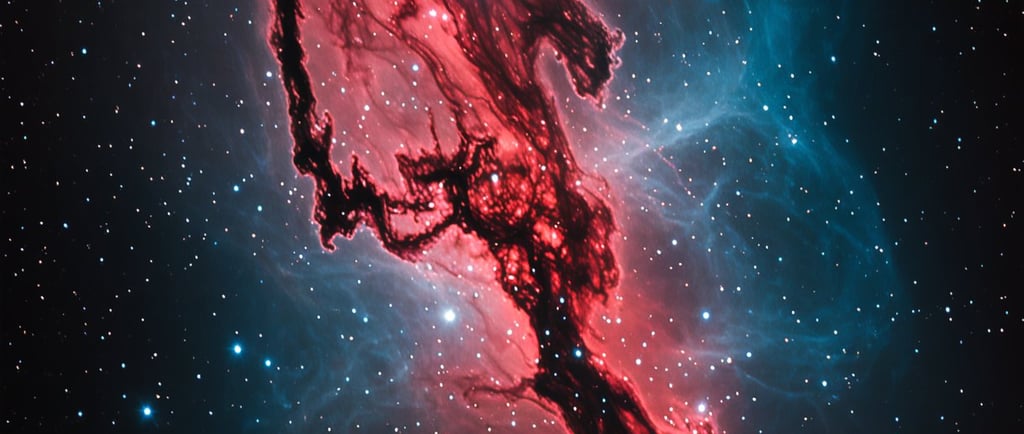NGC 6164: The Dragon's Egg Nebula


Introduction to NGC 6164
The Dragon’s Egg Nebula, officially known as NGC 6164, is a remarkable astronomical phenomenon located approximately 4,200 light years away from Earth in the constellation of Norma. This intricate nebula is a well-studied object that captivates astronomers and stargazers alike due to its unique characteristics and splendid beauty, often evoking curiosity about its formation and significance in the cosmic landscape.
The Formation of the Nebula
At the heart of NGC 6164 lies a central star that has reached a crucial phase in its stellar evolution. This star is a Wolf-Rayet star, known for its significant mass loss due to powerful stellar winds. These winds expel material at an extraordinarily high velocity, which contributes to the nebula's distinctive shape, reminiscent of a dragon's egg. This stellar activity shapes both the nebula's appearance and its structure, leading to various regions of ionized gas that glow with vivid colors.
The Importance of NGC 6164 in Astronomy
Studying the Dragon’s Egg Nebula provides crucial insights into stellar evolution and the life cycle of massive stars. The nebula serves as a stellar nursery where new stars are born from the remnants of supernova explosions and stellar winds. Furthermore, the NGC 6164 nebula plays a pivotal role in shaping galactic environments, impacting the formation of new celestial bodies within its vicinity. The intricate interplay of stellar winds and the surrounding interstellar medium allows astronomers to gain a better understanding of the processes that govern the universe.
In addition to its scientific significance, the visual appeal of NGC 6164 continues to inspire awe among observers. Its luminous clouds of gas and dust, lit up by the energy emitted from the central star, create a striking image that demonstrates the coexistence of beauty and chaos in the cosmos. As a result, it is a perfect subject for amateur astronomers with telescopes and enthusiasts who wish to explore the night sky.
In conclusion, the Dragon’s Egg Nebula NGC 6164, located 4,200 light years from Earth in the constellation of Norma, represents a vital area of study in modern astronomy. Its unique characteristics and vibrant beauty not only highlight the complexity of stellar evolution but also serve as a source of inspiration for both scientists and the general public. Observing and understanding such celestial phenomena continues to deepen our knowledge of the universe and our place within it.
